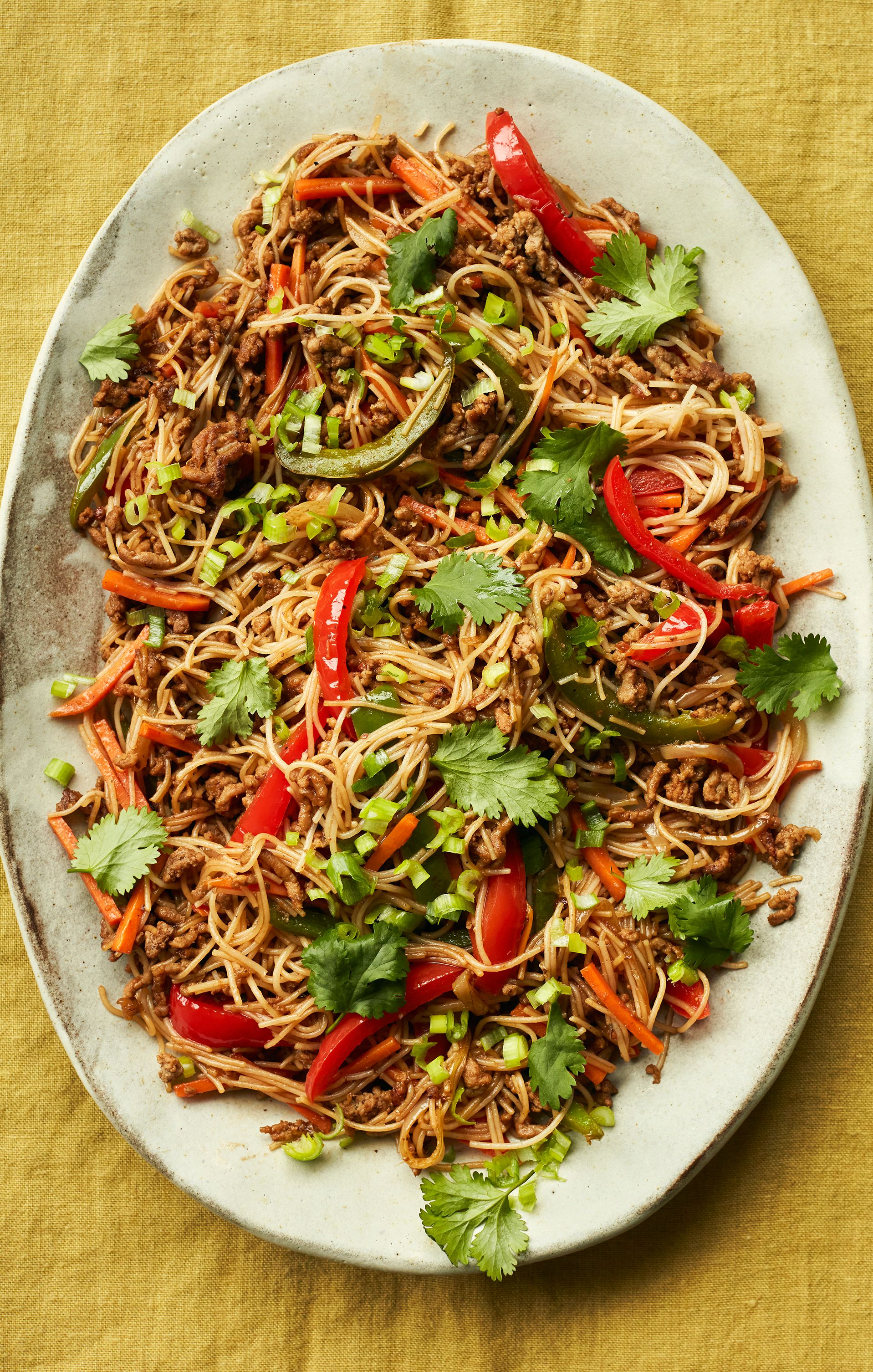
Anna Ansari: “looking at the food and flavours of Asia, from Baku to Beijing.”
Anna Ansari was born in Detroit, Michigan but grew up surrounded by the culture of Central Asia and Iran, where her father was born – a key part of which is cooking, eating and entertaining. “I was raised in a household where we threw parties all the time,” she says. “My father is almost 90 and he is having 60 people over next week for Thanksgiving.”
Inspired by him, and by her travels in Central Asia and China, Ansari set out in her warm, funny debut recipe book, Silk Roads, “to look at the food and flavours of Asia, from Baku to Beijing”.
“I wanted to explore the ways in which ingredients have travelled alongside people down the ancient trade routes of the Silk Roads and influenced different cuisines across the world,” she says. “And I wanted to do that not just from a historical or geographic perspective but through the lens of my own family background and personal history.”
Previously an international customs and trade attorney in New York, she moved to the UK after falling in love with a British lawyer on a trip to Scotland. They’re now married and live with their six-year-old son in east London.
Ansari went through “a rough time” initially, unable to transfer her American law qualifications to a British firm. Salvation came in the form of an online dumpling-making course with the Ukrainian-born chef and food writer Olia Hercules during the pandemic. This led to a friendship and to Ansari testing recipes for Hercules, who recognised a natural storyteller and encouraged her to start writing about food.
Funchoza is one of her favourite dishes – a “warm, addictive noodle dish” that is found all over Central Asia in one form or another. “This version is from the Uyghur people, who are a Turkic Muslim ethnic minority, from the north-west of modern-day China in Xinjiang province,” says Ansari. “And it's just a meaty, spicy, umami bomb of heaven. This cuisine doesn’t get that much attention and that’s something I am aiming to correct.”
Interview by Lisa O’Kelly
Silk Roads is published by DK Red (£27)

Funchoza (Uyghur vermicelli with minced meat)
Funchoza, an addictive Uyghur noodle dish notably reminiscent of both Korean japchae and Sichuan mayi shangshu (“ants climbing a tree”), gets its name from fentiao, the Mandarin word for “noodle strip”. Various iterations of this dish are found across Central Asia and Russia, with different characteristics and ingredients depending on locale. This funchoza highlights flavour constants of Uyghur food – lamb, pepper, cumin, coriander – while holding on to its Chinese linguistic roots through its inclusion of soy sauces, Chinkiang vinegar and Sichuan peppercorns.
Serves 3-4
Ingredients
100g (3½ oz) dried vermicelli (mung bean, sweet potato or rice)
3 tbsp neutral oil
1 onion, thinly sliced into half-moons
2cm (¾in) piece of fresh ginger, minced
2 fat garlic cloves, minced
500g (1lb 2oz) minced lamb (though beef mince would also work)
½ tsp chilli powder
1 tsp ground cumin
½ tsp ground white pepper
2½ tsp ground Sichuan peppercorns
1 tsp fine sea salt
½ tsp monosodium glutamate (MSG) (optional but highly recommended)
2 peppers (colour of your choosing), thinly sliced
2 carrots, peeled and cut into thin, 2.5cm (1in) long matchsticks
2 tsp dark soy sauce
3 tsp light soy sauce
2 tbsp Chinkiang vinegar
2 spring onions, chopped
Handful of coriander leaves
Method
Prepare your noodles of choice according to the packet instructions, then drain and set aside until the dish is nearly finished.
In a wok or a large sauté pan for which you have a lid, heat the oil over a medium–high heat, swirling it around to coat the base of the wok or pan. When the oil shimmers, add the onion and cook for 1 min, then add the ginger and garlic and stir for a few moments until fragrant.
Add the meat, along with the chilli powder, cumin, white pepper and ground Sichuan peppercorns. Break up the mince with a wooden spoon and cook for 2 mins, or until just a hint of pink remains. Now add the salt and MSG (if using), followed by the peppers and carrots. Stir in 4 tbsps water, then cover with a lid and cook for 5 mins, or until the carrots and peppers are soft and floppy.
Meanwhile, cut up your drained noodles with kitchen shears. I do this haphazardly and randomly, Edward Scissorhands-style; feel free to do the same. He made masterpieces and so too will you!
Uncover your wok/pan and turn the heat to high to cook off any excess liquid. Once this is done, reduce the heat to the lowest setting and add your noodles and both soy sauces. Stir to coat and combine everything well before turning off the heat and drizzling the vinegar over the top.
Toss the funchoza to combine, then transfer to a serving bowl or platter, and garnish with the spring onions and coriander to serve.